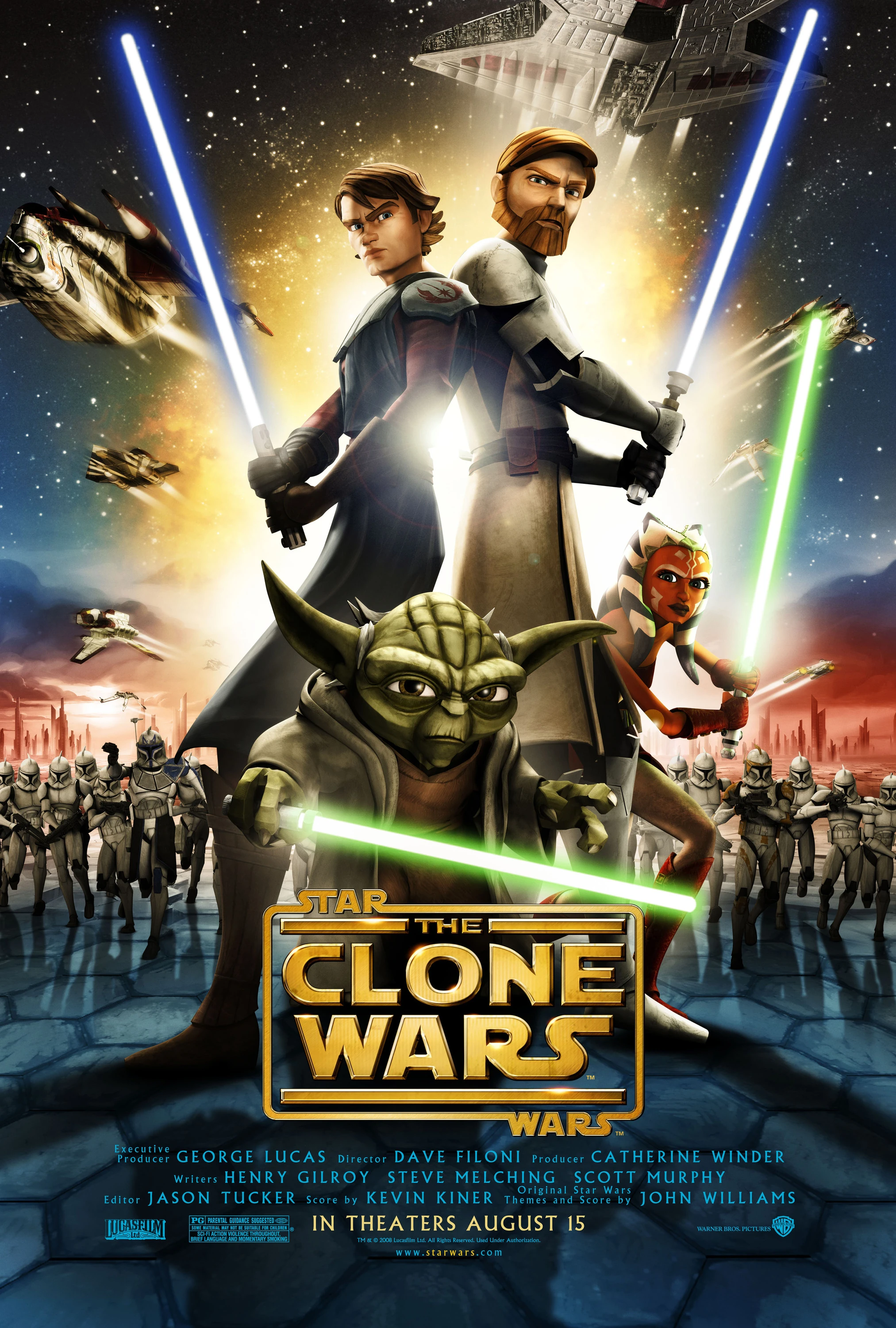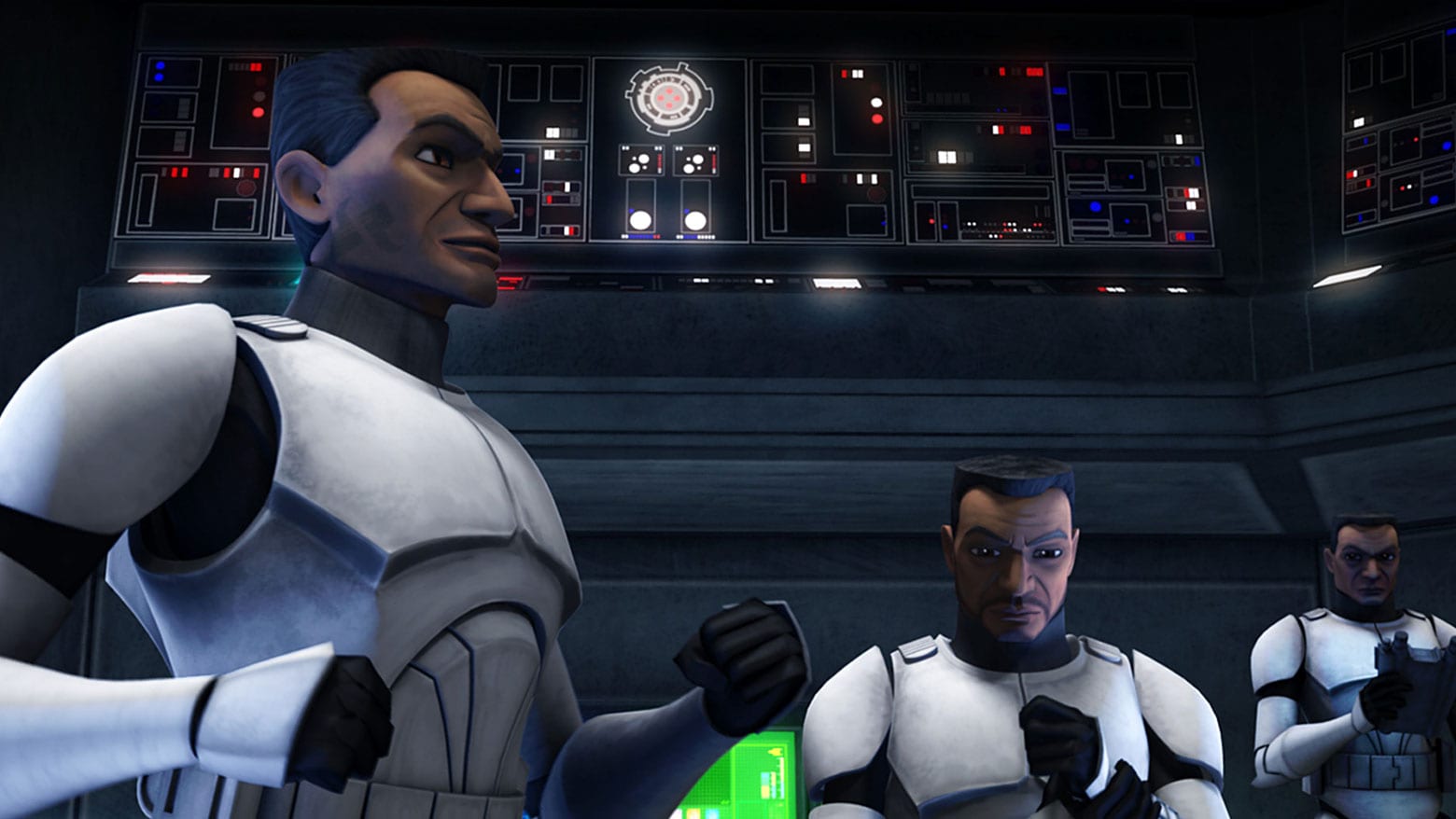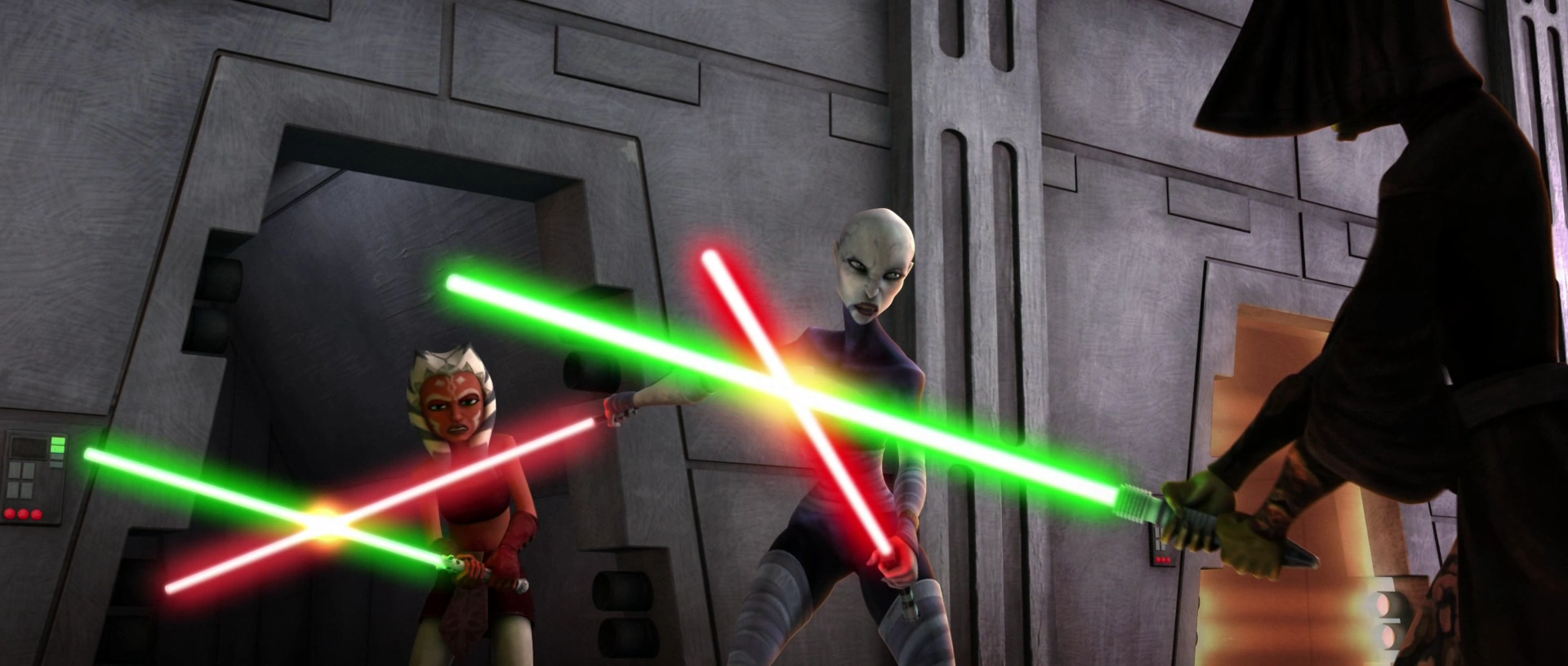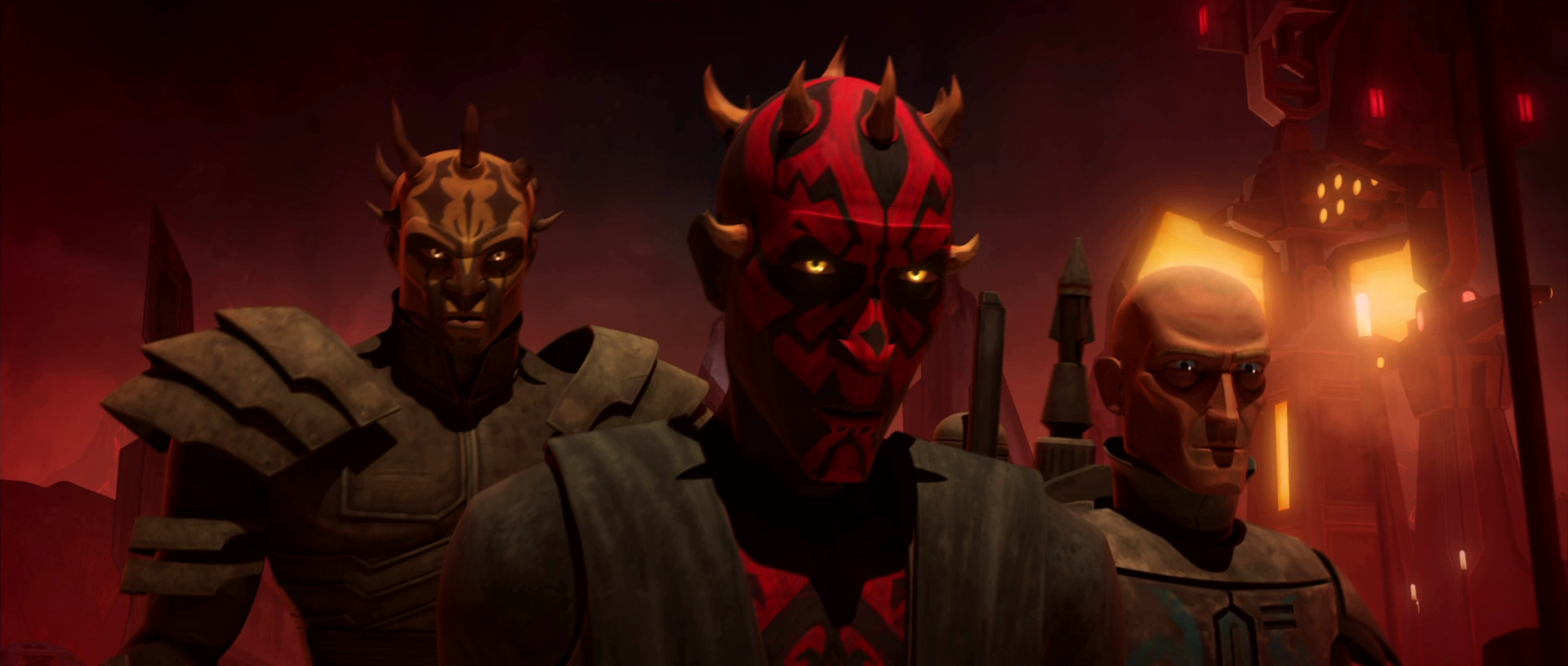I recently finished watching The Clone Wars TV series, and knowing what I do about the show, I opted to consume what other Canon material was available pertaining to the cartoon.
I watched the movie, the five main seasons, and The Lost Missions on Netflix. I read Dark Disciple in the hardcover format and the Darth Maul comics as issues. Finally, I watched the eight unfinished episodes on YouTube.
Follow @C_Andrew_H
The Clone Wars began airing in 2008 following the theatrical release of a tie-in movie. It aired for five seasons until Disney purchased Lucasfilm in 2012 (the deal was completed during the fifth season). All Lucasfilm projects were stopped at that time, including work on The Clone Wars and several other TV shows in development. At this time, a sixth season was partly completed, and seasons seven and eight were almost completely written.
Lucasfilm agreed to put the finishing touches on 13 season six episodes and release them on Netflix. Furthermore, two four-episode arcs whose audio work had been completed but had only been loosely animated were put on Youtube. Four unrecorded episodes were adapted into the Darth Maul: Son of Dathomir comic miniseries by Dark Horse Comics and eight episodes were adapted into the novel Dark Disciple. These unfinished and adapted episodes are still considered Canon, and other unfinished scripts may still be drawn upon.
For this post, I have consumed the following material:
- Star Wars: The Clone Wars (film, combined four episodes, 2008)
- Star Wars: The Clone Wars (TV series, five seasons/108 episodes, 2008-2013)
- Star Wars: The Clone Wars: The Lost Missions (online TV series, 13 episodes, 2014)
- Star Wars: The Clone Wars Legacy
- Unfinished episodes (8 episodes, 2014-2015)
- Dark Disciple (novel by Christie Golden, adapted 8 episodes, 2015)
- Darth Maul: Son of Dathomir 1-4 (comic by Jeremy Barlow, adapted 4 episodes, 2014)
Note that there are other novels and comics that tied into The Clone Wars, but those are not considered part of the New Canon. They will be covered when my Legends read-through gets to the Clone Wars era. There are some other New Canon stories that tie into The Clone Wars, but these will be covered as a prelude to my coverage of the sequel cartoon Rebels.
I watched the movie, the five main seasons, and The Lost Missions on Netflix. I read Dark Disciple in the hardcover format and the Darth Maul comics as issues. Finally, I watched the eight unfinished episodes on YouTube.
Story:
The titular Clone Wars were fought between the clone army of the Galactic Republic and the droid army of the Confederacy of Independent Systems (often called Separatists). The Jedi serve as generals, leading the clone troopers in battle on countless worlds. The Separatists are led by Count Dooku, a former Jedi turned Sith Lord who is secretly the apprentice of Darth Sidious (who rules the Republic as Chancellor Palpatine).
The main adventure of the show follows Obi-Wan Kenobi and Anakin Skywalker, recently promoted to Jedi Knight. The action begins approximately one month after the war begins, when Anakin is assigned a student of his own, a young woman named Ahsoka Tano.
Taking into account the episodes that were adapted to make The Clone Wars movie and the Legacy novel and comic, a total of 145 episodes worth of content were released. It is difficult to summarize that much content in one blog, but a few examples of stories seen in The Clone Wars include:
The main adventure of the show follows Obi-Wan Kenobi and Anakin Skywalker, recently promoted to Jedi Knight. The action begins approximately one month after the war begins, when Anakin is assigned a student of his own, a young woman named Ahsoka Tano.
 |
| The Clone Wars movie poster. Image from Wookieepedia. |
Taking into account the episodes that were adapted to make The Clone Wars movie and the Legacy novel and comic, a total of 145 episodes worth of content were released. It is difficult to summarize that much content in one blog, but a few examples of stories seen in The Clone Wars include:
- the introduction and training of Ahsoka, who learned much about the Jedi way before choosing to leave the Jedi Order (after first being abandoned by the Jedi Council);
- the rise of many bounty hunters, including Cad Bane, Aurra Sing, a young Boba Fett, and younger versions of others seen in the movies;
- the story of clone troopers like Fives and Echo, who we see as trainees and rookies who become Advanced Recon Commando (ARC) Troopers, or Rex, who fought alongside General Anakin Skywalker throughout the war;
- the saga of Asajj Ventress, Nightsister and Count Dooku's former assassin, tossed aside by her masters to forge her own path;
- the return of Darth Maul, who survived his bisection on Naboo and seeks vengeance against Obi-Wan Kenobi with the help of Maul's brother, the corrupted Savage Opress;
- the rise of the Mandalorian Death Watch cult and their quest to take power on Mandalore, uniting with Maul and Savage and various crime families to achieve their goals;
- the Jedi encounter with the supernatural Father, Son, and Daughter, who represented different aspects of the Force;
- the adventures of Hondo Ohnaka, pirate and occasional thorn in the Jedi's side; and
- continued battles between the Jedi/clones and droids on countless worlds.
We also meet a variety of characters that will have larger roles later on. The pirate Hondo Ohnaka and the Twi'lek freedom fighter Cham Syndulla, not to mention Ahsoka Tano, Darth Maul, and Captain Rex, have roles in the Rebels cartoon (a sequel to The Clone Wars in many respects). Saw Gerrera, the Rebel terrorist from Rogue One, also traced his origins to The Clone Wars.
 |
| Left: Saw Gerrera and his sister Steela in The Clone Wars. Right: Saw Gerrera in Rogue One. Both images from Wookieepedia. |
Thoughts:
I really enjoyed The Clone Wars, and wish that they had continued making episodes after Lucasfilm's acquisition by Disney. I am happy that they managed to finish several episodes from the season they were working on, and conclude some other stories in comics and books. Still, more content would have been fun.
Of course, not all episodes are created equal. Every good show has bad episodes, and The Clone Wars was no different. The show was aimed at children, and so there are episodes featuring droids or Jar Jar Binks that could be annoying but were probably enjoyed by the target audience.
Conversely, there were also amazing episodes. Several pertained directly to clone troopers like Rex, Fives, Echo, Boil, Waxer, and countless others. Seeing how they interacted with the Jedi and among themselves was quite interesting. The story of Asajj Ventress was a great epic, one that introduced the Nightsisters of Dathomir into the New Canon. Many of the bounty hunter episodes were interesting, as bounty hunters in Star Wars stories tend to be badass.
Most bad episodes were earlier in the series, and seasons 4 and 5 in particular were fantastic. The series had a rough, inconsistent start, but by the end, there were no bad episodes.
I liked how, knowing they would never be finished and broadcast, a number of episodes were adapted into other media. Dark Disciple wrapped up the story of Asajj Ventress and made Canon a number of elements of Quinlan Vos's character. Darth Maul's Clone Wars story was ended nicely in the Son of Dathomir comic miniseries.
That said, I feel the eight unfinished episodes released as rough storyboards on Youtube were unnecessary. The voice and sound work was finished, and it was cool to see how they mock up the visuals to show the animators what each shot should look like, but these episodes added very little. We will never again see the Bad Batch or Echo. The kyber crystal arc only confirmed that giant crystals of that type exist and could power a weapon like the Death Star (informing Rogue One), but we didn't see the crystal that Palpatine would later acquire. The only good thing to come out of these eight episodes was confirmation that Anakin continued to feel bad about how the Jedi Council let Ahsoka down, driving her away. As we did not get much new information, and as the rough animation makes these episodes nigh-unwatchable, I suggest skipping these unfinished episodes.
In terms of its Canon status, The Clone Wars is a bit strange. It is unquestionably in the New Canon, but it is also considered part of Legends continuity. There are tie-in novels and comics to The Clone Wars, all of which -- except for Darth Maul: Son of Dathomir and Dark Disciple -- are Legends only. The problem is that, in Legends, The Clone Wars disrupted much of what we knew about that time period. Characters shown killed in certain missions in comics or novels are instead killed in TV episodes in different ways, places, and times. Also, previously-written stories put Anakin's promotion from Padawan (apprentice) to Jedi Knight fairly late in the war, but The Clone Wars put it much earlier and compressed other stories where Anakin was explicitly an apprentice to a much narrower time period. My Legends read-through partially takes into account this time compression, but overall the entire Legends universe works better if we say that The Clone Wars is New Canon only, and remove it from Legends altogether. Any later references to The Clone Wars in Legends material can be retconned. Regardless of my opinion in this matter, I do plan to read any The Clone Wars Legends stories as they come up and review them for this blog.
 |
| Anakin and Obi-Wan (right) meet Ahsoka Tano (left). Image from Wookieepedia. |
Of course, not all episodes are created equal. Every good show has bad episodes, and The Clone Wars was no different. The show was aimed at children, and so there are episodes featuring droids or Jar Jar Binks that could be annoying but were probably enjoyed by the target audience.
Conversely, there were also amazing episodes. Several pertained directly to clone troopers like Rex, Fives, Echo, Boil, Waxer, and countless others. Seeing how they interacted with the Jedi and among themselves was quite interesting. The story of Asajj Ventress was a great epic, one that introduced the Nightsisters of Dathomir into the New Canon. Many of the bounty hunter episodes were interesting, as bounty hunters in Star Wars stories tend to be badass.
 |
| Clone Troopers from the episode Rookies. Image from Wookieepedia. |
I liked how, knowing they would never be finished and broadcast, a number of episodes were adapted into other media. Dark Disciple wrapped up the story of Asajj Ventress and made Canon a number of elements of Quinlan Vos's character. Darth Maul's Clone Wars story was ended nicely in the Son of Dathomir comic miniseries.
 |
| Asajj Ventress dueling Ahsoka and Master Unduli, in episode Cloak of Darkness. Image from Wookieepedia. |
 |
| Darth Maul, Savage Opress, and Pre Vizsla in episode Eminence. Image from Wookieepedia. |
That said, I feel the eight unfinished episodes released as rough storyboards on Youtube were unnecessary. The voice and sound work was finished, and it was cool to see how they mock up the visuals to show the animators what each shot should look like, but these episodes added very little. We will never again see the Bad Batch or Echo. The kyber crystal arc only confirmed that giant crystals of that type exist and could power a weapon like the Death Star (informing Rogue One), but we didn't see the crystal that Palpatine would later acquire. The only good thing to come out of these eight episodes was confirmation that Anakin continued to feel bad about how the Jedi Council let Ahsoka down, driving her away. As we did not get much new information, and as the rough animation makes these episodes nigh-unwatchable, I suggest skipping these unfinished episodes.
In terms of its Canon status, The Clone Wars is a bit strange. It is unquestionably in the New Canon, but it is also considered part of Legends continuity. There are tie-in novels and comics to The Clone Wars, all of which -- except for Darth Maul: Son of Dathomir and Dark Disciple -- are Legends only. The problem is that, in Legends, The Clone Wars disrupted much of what we knew about that time period. Characters shown killed in certain missions in comics or novels are instead killed in TV episodes in different ways, places, and times. Also, previously-written stories put Anakin's promotion from Padawan (apprentice) to Jedi Knight fairly late in the war, but The Clone Wars put it much earlier and compressed other stories where Anakin was explicitly an apprentice to a much narrower time period. My Legends read-through partially takes into account this time compression, but overall the entire Legends universe works better if we say that The Clone Wars is New Canon only, and remove it from Legends altogether. Any later references to The Clone Wars in Legends material can be retconned. Regardless of my opinion in this matter, I do plan to read any The Clone Wars Legends stories as they come up and review them for this blog.
Next:
The next New Canon material I cover will be the novels and comics tying into Rogue One. Before that, my Legends Read-Through will continue with a three-part prologue of The Phantom Menace.
Follow @C_Andrew_H


Comments
Post a Comment